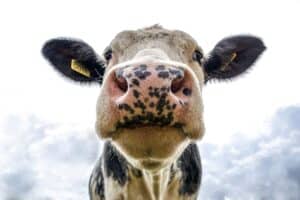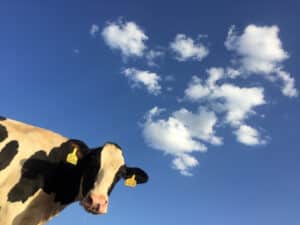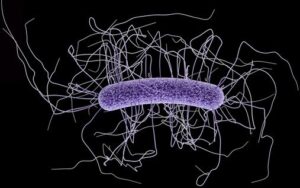Lisa R. Tager, Ph.D.
Animal Nutrition Specialist
We hear a lot about functional carbohydrates like MOS and beta glucans these days as they are two of the most well researched and understood components of yeast cell wall products. We don’t, however, hear much about another important functional component of yeast cells called nucleotides and nucleosides. Nucleotides and nucleosides are derived from the genetic content in a yeast cell wall, but what makes them so important to animal feeding and health?
Nucleotides are molecules that, when joined together, make up the structure of the nucleic acids DNA and RNA and they include Adenine, Guanine, Cytosine, Uracil, and Thymine. Nucleosides are essentially nucleotides not attached to a phosphate group, making them more easily transferred across cellular membranes. These include: Adenosine, Guanosine, Thymidine, Uridine, and Cytidine. Nucleotides and nucleosides are essential to every cell in the body for cell proliferation and reproduction as well as transmission of genetic information. Because RNA and DNA are far too large to pass across cell membranes, they must be broken down into nucleotides and nucleosides for easy transmission. Nucleotides and nucleosides can be acquired in one of two ways: 1) constructed by cells themselves via de novo synthesis or 2) by using energy to break down RNA and/or by absorbing free nucleotides already present in the body. De novo synthesis of nucleotides and nucleosides comes at a high metabolic energy cost, so providing an animal with free, readily available nucleotides and nucleosides is a practical way to help reduce metabolic costs on energy in animals. Simply supplying full RNA to the animal can work too, but comes at both a large cost financially as well as in energy for the animal to break them down. Further, feeding full RNA in excess can cause uric acid buildup in the body of animals, leading to gout, arthritis, and even kidney stones, so it is not the best recommended method.
RNA derived from yeast cells is not fully intact due to autolysis during the growth and/or culture process. It does, however, remain in small blocks and often connected to other proteins. Therefore, to release individual nucleotides and nucleosides, an enzymatic hydrolysis must be performed to break down the RNA blocks or break them away from connecting proteins. This process frees the nucleotides and nucleosides, making them readily available for animal use without wasting energy on digesting RNA/DNA or performing de novo synthesis.
Nucleotides and nucleosides are beneficial in animal feeding for many reasons. In a developed ruminant, they will be utilized quickly by the rumen microbes and this may enhance rumen health. However, in monogastrics and developing calves, nucleotides and nucleosides provide many positive benefits to immune function, intestinal integrity, growth, and feed conversion.
The immune system is comprised of tissues that have very rapid turnover with very little ability to perform de novo synthesis of nucleotides. Providing high quality, available nucleotides directly to immune function is essential to fuel the many tasks the immune system undertakes including: blood cell multiplication, liver cell renewal, and bone marrow cell. Interestingly, easily absorbed nucleosides are now being used as part of cancer treatments in humans because of these positive qualities. Additionally, nucleotide and nucleoside supplementation also has positive effects on intestinal integrity because: 1) greater than 70% of the immune system resides in the gastrointestinal tract so the effects discussed earlier apply in the gut as well, 2) nucleotide supplementation allows for an increase in intestinal cell division with lower energy use, and 3) data in poultry show villi health and height are affected positively because cell turnover is most efficient (studies available upon request).
The combined benefits of nucleotides and nucleosides on improved immune function and intestinal integrity brings us to the final value in feeding free nucleotides and nucleosides: improved growth and feed efficiency. Consequently, in multiple studies on poultry and swine, it has been determined that there is a linear response to increased inclusion rates of nucleotide products on feed conversion and weight gain (data available upon request).
Feeding a hydrolyzed yeast product, such as Hilyses hydrolyzed yeast culture, will provide the free source of nucleotides and nucleosides that are effective in animal feeding. Moreover, because Hilyses is produced via a high temperature, low acidity ethanol yeast fermentation, its base yeast cells have a more robust population of genetic content in their cell wall than other products on the market, making it one of the most concentrated and high quality source of nucleotides and nucleosides available. Hilyses will not only provide essential nulceotides and nucleosides to animals undergoing stress, challenge, disease, and rapid growth, but has also been proven to transfer to milk in lactating swine making it doubly beneficial to both sow and piglet (data available upon request).
While not a highly discussed topic in animal feeding yet, nucleotides and nucleosides are an essential item to consider for animals undergoing any type of rapid cell multiplication due to stress, reproduction, and growth. Providing free nucleotides and nucleosides via Hilyses to your animal feeding system will benefit animal health, growth, reproduction, and nutritional efficiency, making it well worth the return on investment you are sure to to experience. To review the research and data that support the information in this paper, contact your MarSyt representative.



